Among the many reasons China has failed to colonise the Tibetan Plateau, none is more foundational than Han shortness of breath when lowlanders ascend to Tibetan heights.
Over many centuries of Han expansion, China has developed many methods for peopling conquered lands with Han peasants, backed by Chinese garrisons who not only guard the new territories but also consume the food the immigrant peasants grow. That didn’t work in Tibet, the climate is too cold, the air too thin, hypoxic in scientific terminology, and far too many incoming Han Chinese, military and civilian alike, succumbed to such severe altitude sickness that returning to lower altitudes was the only treatment possible.
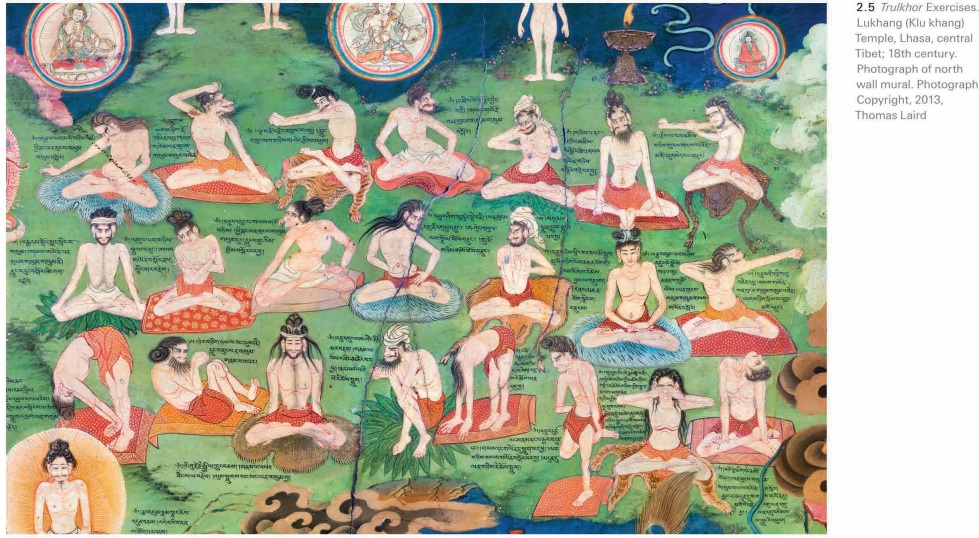
This has been so for decades, and remains so today, greatly restricting mass Han settlement, and the active fighting fitness required of soldiers able to do battle, even in heavy snow that requires great exertion. This thoroughly unsatisfactory constraint has shaped China’s ability to make Tibet China’s. In recent years, China has looked to science and hitech to govern Tibet from afar, from the skies by satellite data, and by remote control from distant cities, as a way of governing without having on the ground a large, politically reliable cohort of Han immigrants.
China’s military scientists say of CMS, chronic mountain sickness: “In Tibet, an overall prevalence of 5.6% in immigrant civilians was reported; in Lhasa immigrant civilians, the CMS rate was 2.2-8.7%. In a similar young soldier population in Tibet, the CMS prevalence was reported to range from 9.3% (in Lhasa at 3,650 m) to 30.4% (in an area at 5,000 m), which is similar to our findings.” This is serious. As well as headaches, chronic mountain sickness causes difficulty sleeping, ringing in the ears (tinnitus), cyanosis –feet and hands turning blue- dilatation of the veins and paresthesia, loss of sensation in hands and feet.
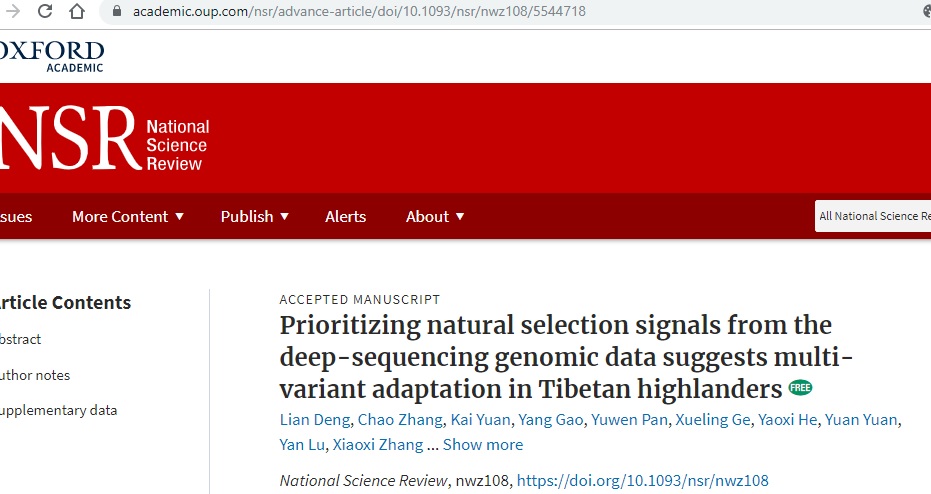
China has also turned to science to crack the mystery of how Tibetans can be so at home in Tibet, able not only to survive the thin air, but do extremely hard work, churning cream into butter, chasing wandering yaks, rounding up herds, hunting wolves, driving animals over the high passes, threshing barley etc. The fitness of the Tibetans and the palpable unfitness of so many Han sent or drawn to Tibet remains an embarrassment.
Now, in what is being presented as a scientific breakthrough, computational geneticists seem to be on the verge of nailing the secret. This has been a long story, of decades of research, based on making thousands of Tibetans give blood and other biological samples, for intensive laboratory analysis.

The recent breakthrough comes from a team based at the Chinese-German Institute for Computational Genetics in Shanghai, a joint venture of the Max Planck Institute and the Chinese Academy of Sciences. Their access to big data crunching computer power was essential. They analysed blood taken from 240 Tibetans and 240 Han in Tibet, enabling them to map both the Tibetan phenotype and genotype, so now the big task ahead is to figure out how they connect, what genetic variant causes what phenotypical characteristic of Tibetans. Other blood based research projects have taken the blood of thousands of Tibetans.
Until now, most of the research on this annoying constraint on the Han has been done in the city of Xianyang, in Shaanxi province, just outside the provincial capital, Xi’an.
Why would the Tibet Minority Nationalities University in Lhasa, Xizang Minzu Daxue, be in charge of a laboratory in distant Xianyang? Lhasa runs its Key Laboratory of High Altitude Environment and Genes Related to Disease of Tibet, but it is in Xianyang. The city is not just comfortably close yet comfortably far from grimy Xi’an and its seven million inhabitants, Xianyang has its own medical university and good research facilities. Xianyang also has a deep lineage, all the way back to emperor Qinshihuangdi, who conquered all the warring kingdoms of ancient China, creating the first empire. The ruthless Qinshihuangdi, famous worldwide for his terracotta warrior army nearby, was the progenitor of China, of one-man rule, of a powerful state that could force all around to pay tribute. It seems fitting. then, that conquering the secrets of Tibetan mitochondria is based there. Key Laboratory for Molecular Genetic Mechanisms and Intervention Research on High Altitude Disease of Tibet Autonomous Region, School of Medicine, Xizang Minzu University, Xianyang Shaanxi 712082,is the full official name.
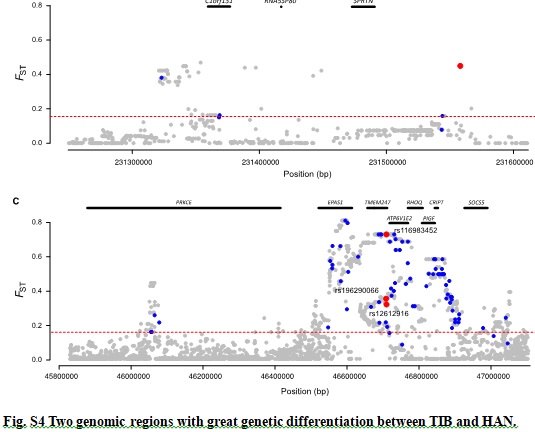
As the name suggests, “high altitude disease” is not a Tibetan problem, it’s a Han Chinese problem, and a serious one, as roughly one in ten Han who go to Tibet suffer altitude sickness so severe they have to leave, no matter what. A further 10% to 30% manage to soldier on, despite chronic altitude sickness. Yet to solve this Han problem vast computational power was needed, to crunch vast accumulations of genetic data, from vast numbers of Tibetan blood providers. Tibetans, as usual, provide answers to China’s problems.
Whether those blood extractions were voluntary, coerced, or obtained by falsely pretending the blood collection was to check the health status of donors, and then give useful feedback, is not at all clear. In both Xinjiang and Tibet “convenience police stations” have been set up in urban areas, which invite the locals to give blood and other biological samples, incentivised as a health check. Worldwide big corporations similarly vacuum up data on individual lives and habits, drawing in each of us data providers with the promise of convenience, comfort, and individuality.
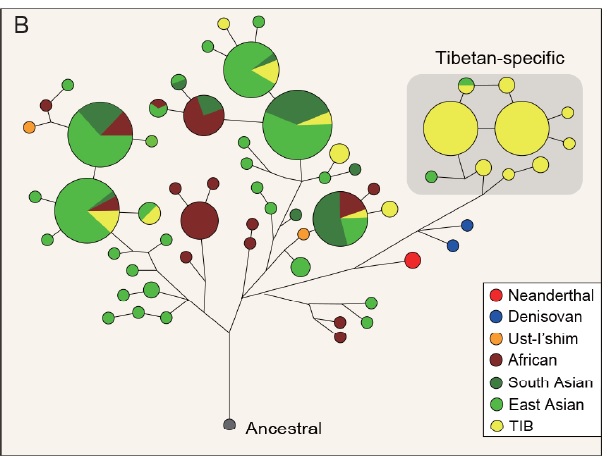
But mass sampling of the genetics of an entire people, a whole nation, so fundamentally distinct from the Han supermajority, is extraordinarily invasive. It is meant to be extraordinarily revealing, but it turns out, surprise, surprise, that this is far more complex than anyone had supposed; and despite the excitement at the August 2019 announcement, this top-level Sino-German team is no closer to identifying the specific gene that gives Tibetans their strength, to live well on a vast island four to five kilometres into the sky, with the surrounding mountains much higher still. All this crack research team found for sure is that the likeliest candidate for the innermost secret of the Tibetans turns out to have little or nothing to do with how profoundly Tibetans are adapted to altitude. For the past decade Chinese scientists locked in on genetic variant peculiar to Tibetans, in the expectation of proving this is what results in Tibetan adaptation to altitude. “EPAS1 is so far the most well-recognized candidate gene for high-altitude adaptation of Tibetans, as well as other human and non-human species on the highlands. However, no adaptive functional variant has been identified in EPAS1, leaving an unsolved problem in this field.” Back to square one.
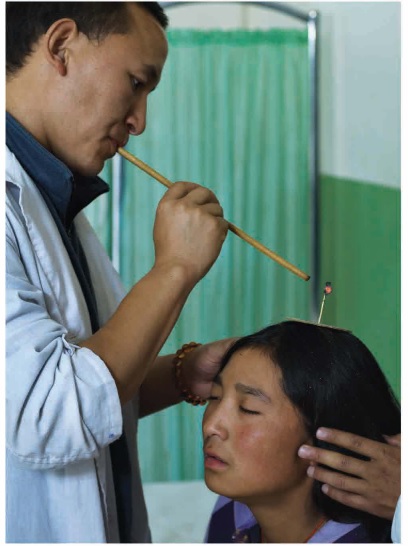
It is one thing to map the full genetic code of the Tibetans, another to figure which typically Tibetan genetic variant results in inborn climatic capability. It’s just too complex, so it may yet be many more years before China’s best labs, whether in Shaanxi Xianyang or Shanghai, can pinpoint the secret source of Tibetan strength.
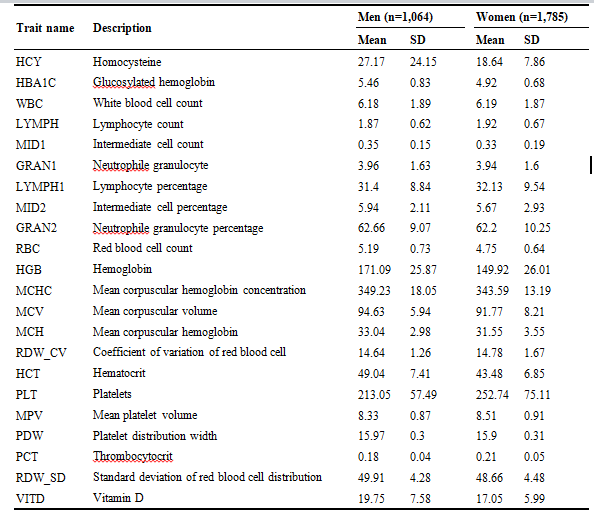
BACK TO THE FUTURE, FORWARD TO THE PAST
Actually, as is usual with computational genetics, the latest team, from Shanghai, are better at projecting far into the past rather than unlocking a key to a future in which Han can breathe Tibetan air and not fall ill. It is at this point that the story gets really interesting for Tibetans.
The genetic variants found in the cells of Tibetans, and not in Han Chinese, are ancient, going back to the earliest human settlements in Tibet, which means going back 60,000 years. That means today’s Tibetans are descended from ancestors, of various human and near-human species, who interbred and shared their genes around. It means today’s Tibetans, who are deeply interested in lineage, history and prehistory can go back much, much further than the three or four thousand years of Zhang Zhung and Yundrung Bon, the preBuddhist culture of the Tibetans.
Until very recently, while there was evidence that humans had inhabited Tibet as far as 60,000 years ago, it was not clear whether they shared the same genetics as modern Tibetans. They may have been another species, with no direct connection to contemporary Tibetans. That uncertainty has now been resolved. Those Denisovans from Siberia, and other early inhabitants of Tibet 60,000 years ago ARE the ancestors of modern Tibetans. That is the clear outcome of the latest research.
The findings of this Chinese team of geneticists could be summarised:
1) adaption to highland living involves more, and more widespread genetic variations than previously identified
2) Tibetan Highland population is more different from lowland populations and different in more ways than previously thought
3) Tibetan plateau populations are ancient, older than previously thought, and the most ancient of Eurasian populations
4) the only way newcomer populations have adapted is by joining the existing Tibetan population ie by becoming Tibetan. Mandatory mingling, genetic fusion of Tibetans and Han works only in that direction.
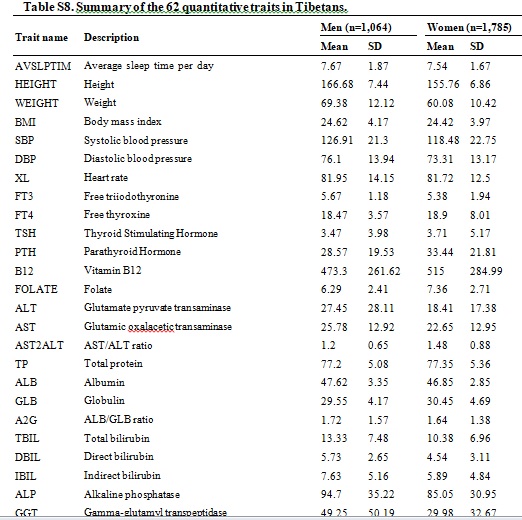
DEEPLY GROUNDED TIBETANS
This all suggests an impressive adaptability common to Tibetans. Other scientists, the palynologists, have charted the climatic ups and downs, the advancing and retreating glaciers of Tibet, also over many thousands of years, which also changes our picture. If the palynologists are right (and they too extrapolate backwards from the present into the deep past, like the geneticists) the Tibetans have managed to live in climates both considerably warmer than today, and much colder than today, and still thrived.[1]
Palynology is the science of ancient seeds, dormant in the soil, occasionally -if you know where to look- for thousands of years, a reliable guide to what used to grow in a specific landscape which today may no longer support those plant species. Palynologists, many from Germany, roam the pastures of Tibet looking for seed fragment clues to past climate change. The more they find, the more we can respect the Tibetan ancestors for handling extremes.
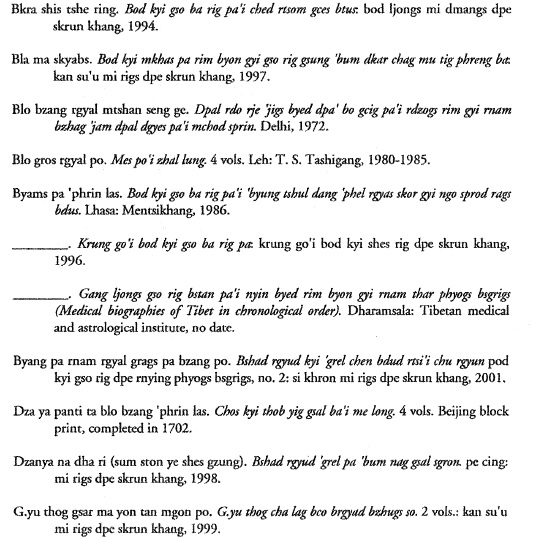
LET’S ALL MINGLE: TIBETAN TINDER
However, Tibetans as well as Han will be more interested in the future, and what the latest findings mean. What has been clear for years is that the genetic change that makes Tibetans distinctive is genetic at the most profound level, within the mitochondria at the heart of each cell. Mitochondria are transmitted across generations only on the female line, from mother to daughter and son, but only the daughter can then transmit further, to the next generation.
So if China were to decide the only way to make Han Chinese better suited to life in Tibet is to crossbreed mixed Tibetan/Han marriages, those marriages would have to be restricted to Han men marrying Tibetan women. It just doesn’t work the other way around.
Does China have any such plan? It would take a long time, and would require social engineering of mixed marriages on a big scale. China does promote inter-ethnic mingling, with slogans and campaigns in both Xinjiang and Tibet promoting intermarriage. The purpose of these mass campaigns is assimilation, dissolving the Tibetan and Uighur sense of distinctive difference into a singly nationality, the one Chinese race. This assimilationist agenda, although not publicly announced, is well documented in many Chinese sources as the driver of ethnic policy over the past two decades, supplanting the earlier policy of minority nationality territorialised autonomy.

Assimilation, like genetic mixing, is also a slow process, but these days China is forcing the pace, most evidently in Xinjiang, where Han are ordered to live in the homes of Uighur families, to instruct Uighurs how to become civilised, how to respect the central state, how to live in apartment tower blocks, how to refrain from spitting, how to become modern urban consumers, how to memorise and repeat official slogans. The coercive mass campaigns are chauvinist, racist, arrogant and deeply resented, yet no-one calls this Great Han Chauvinism (as Mao once labelled it) for what it is.
Will China succeed in making the Uighurs Chinese by mass detention, mass recitation of party-state slogans, mass relocations, followed by release from detention under ongoing surveillance to detect any behaviour that does not comply with the Han norm? As well as the cruelty of the mass detentions and mindless mandatory parroting of official slogans, many observers wonder if this racist mass campaign can possibly achieve its goal, or only breed resentment and a deeper sense of difference.
Part of the assimilation campaign throughout China’s far west –in both Xinjiang and Tibet- is intermarriage between ethnicities. Theoretically, this mobilises minorities to greater mobility throughout China, moving to bigger cities, better jobs, entrepreneurial opportunities anywhere in China, wherever the factors of production are most favourably congregated. But the reality is that both Tibetans and Uighurs face intense discrimination in central and eastern China, suspicion, mistrust, fear and refusal of service the moment an ID card declaring Tibetan or Uighur nationality is produced, on demand. In almost any society around the world, the most mobile are the young men, and it is exactly the young men who are most feared by Han as possible terrorists.
So if there is to be inter-racial mingling, as promoted by official slogans and campaigns, whether for assimilation or genetic mixing, it will in practice mean Han Chinese men coming in to Tibetan and Uighur communities and families, and breeding. This is deeply repugnant to both Uighurs and Tibetans, especially to the men, who resent the loss of “their” women.
If China gets serious about such social engineering within families, such resentments could boil over into serious danger to stability. So far, even in Xinjiang, the exhortations to intermingle, intermarry and interbreed have seldom been enforced coercively. The slogans remain aspirational, unenforceable in practice. But what if interbreeding proves to be the only way a large Han population could colonise Tibet?
At present, this is all speculative, and Tibetans have many more immediate concerns. China too has the immediate and ongoing concern that so many Han Chinese emigrating to Tibet are struck down by chronic mountain sickness, CMS, to use medical jargon which medicalises living in Tibet –on the plateau, not up a mountain- as a disease.

IS TIBET A DISEASE?
A Chinese medical team trying to quantify precisely the extent of the “disease burden” experienced by otherwise healthy young Han males coming to Tibet put this clearly: “CMS imposes a considerable burden on Chinese immigrants to Tibet. Immigrants with characteristics such as a higher residential altitude, more advanced age, longer highland service years, being a smoker, and working in engineering or construction were more likely to develop CMS and to increase the disease burden. Higher blood pressure and heart rate as a result of CMS were also positively associated with the disease burden.”[2]
The authors identify construction and engineering, occupations requiring actual physical exertion, as particularly problematic. This 2012 report is by a team from another lowland institute focussed exclusively on Tibet as a medical condition, the College of High Altitude Military Medicine, Third Military Medical University, 30 Gaotanyan Street, Shapingba District, Chongqing. If Han construction workers are hit by crippling headaches induced by hypoxia (low oxygen) in Tibet, so too are soldiers laden with backpacks and weapons. No doubt these researchers also tested Han soldiers, and reported their findings to the relevant organs. Presumably, that is a state secret.
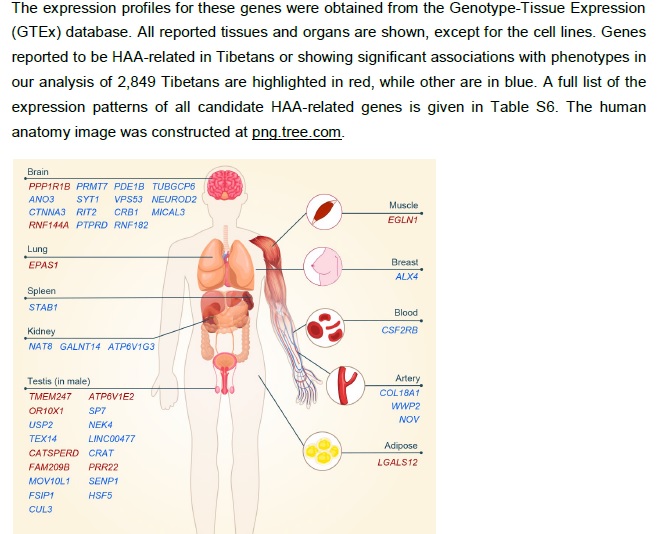
If Tibet is a disease, it is chronic, and only gets worse as time passes. If you suffer CMS but continue to stay in Tibet, those blinding headaches don’t go away, it worsens: “CMS is a hypobaric, hypoxia-related illness that presents with polycythemia leading to cardiac failure or neurological disorders. CMS seriously affects the health of highland immigrants and often results in significant declines in productivity and quality of life. Patients usually experience decreased exercise tolerance, loss of memory, headache, dizziness, and fatigue. Compared with their Tibetan counterparts, Han suffer from significantly higher rates of CMS when they reside in highland areas.”
Polycythemia means having way too many red blood cells, caused by a body accustomed to the heavier, thicker air of Xianyang or Chongqing travelling up to the Tibetan Plateau. The red blood cells transport oxygen all over the body, essential to all bodily functioning.
The human body quickly produces more red blood cells if it finds itself suddenly short of oxygen, it’s a natural adaptive response. That’s fine if you are a lowlander just visiting. If you are an athlete seeking competitive advantage, you might even choose to train at high altitude so as to produce those extra red blood cells, available to deliver oxygen to muscles when you are pumping hard on the race track. So short term polycythemia is not a problem, but in the long term, if that is the only way for the body to get more oxygen, you are in trouble. Cardiac failure looms.[3]
This is precisely where Tibetans have an unfair advantage, from a Han perspective. How do they do it? This has been researched for decades, which is why there are two institutes in Xianyang and Chongqing dedicated solely to cracking the secrets of Tibetan inner strength.
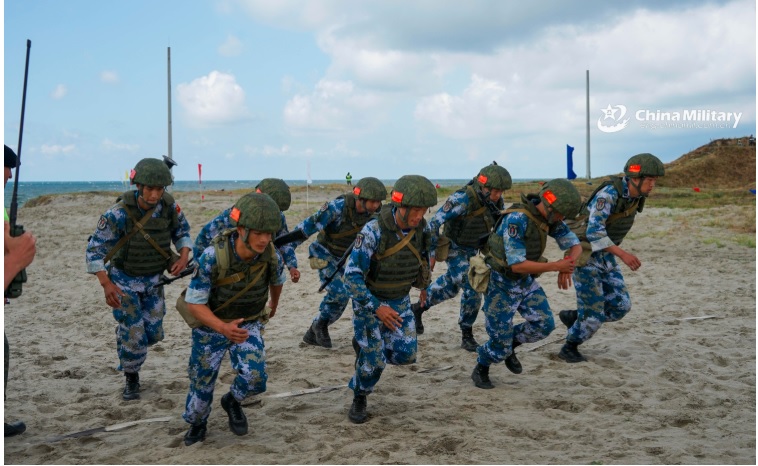
CAN XI JINGPING THOUGHT OVERCOME CHRONIC MOUNTAIN SICKNESS?
The military scientists tell us the typical response of military commanders in Tibet is to order their soldiers to suck it up, to overcome their headaches, breathlessness and fatigue by willpower, but now this will no longer do: “The decline in health status induced by CMS in the immigrant population has been underestimated in the past. The authorities focus on acute mountain sickness because it can cause obvious loss of manpower in some emergency situations. By contrast, CMS, of which the symptoms are generally not severe, tends to be ignored by the authorities. They believe that CMS does not affect day-time work very much, and it can be overcome by will power and courage derived from military discipline and patriotism. However, the disease not only gradually reduces the state of health and quality of life of individuals, but it also decreases the working capacity of the whole population. In the health service system for Chinese highland troops, CMS has not been considered to be an occupational disease or to warrant compensation. Currently, the highland troops only calculate the prevalence of CMS. Quality of life is not considered to be important by the authorities, and the reduction in health cannot be quantitated.”
Patriotism does not cure chronic mountain sickness. Shouting patriotic slogans, in unison with your platoon, does not generate a pathway to get oxygen to cells that need it, without clogging the arteries with too many red blood cells.
Patriotism is no longer enough; it is time for big science, armed with big data, to step in and conquer Tibet. The language of conquest features prominently in the ways the Han Chinese researchers, whether in Shanghai, Xianyang or Chongqing, tackle the problem. The Shanghai team says: “The adaptive genetic variants map provided by this study help to narrow down the targets for further investigations on the genetic basis and molecular mechanism of high-altitude adaptation of Tibetans, and provides new perspective for unrevealing the mystery of human conquest of the extreme environment at high altitude. Notably, this study proposed that multiple variants may jointly deliver the fitness of the Tibetans on the Plateau, where a complex model is needed to elucidate the adaptive evolution mechanism.”
The language of conquest is also used for the earliest human settlement of Tibet: “In fact, it was a long journey for human to conquer the Tibet Plateau. A previous study by Xu’s team estimated that the genetic origin of the Tibetan highlanders could be traced back to around 40,000 to 60,000 years ago, in the middle-late Paleolithic. The early migrants to the plateau had extensive genetic admixture with each other, and had further gene flows with the latecomers, leading to the admixed descendants with very complex genetic makeup — inherited from ancestry lineages of modern human and archaic hominins (e.g. Altai Neanderthal, Denisovan and other unknown archaic species). During this process, some archaic genomic segments that were advantageous to the high-altitude adaptation were retained, and were accumulated to high frequencies through natural selection.”
How can China catch up, when it took 60,000 years of natural selection to produce Tibetans who manage to get enough oxygen to their muscles without overloading the blood circulation with too many red blood cells? The 2019 breakthrough actually complexifies the task further. There are now many more genetic variants to look at, and no-one knows which variant in the Tibetan genotype results in the greater ability Tibetans have to get enough oxygen from thinner air. So a lot more research will be needed, and a lot more Tibetan blood.
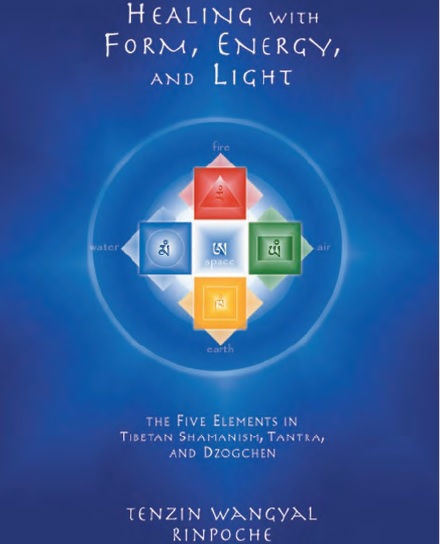
Shanghai, and its Sino-German computational genetics lab, has emerged as a competitor with Xianyang and Chongqing in the race to reconquer Tibet. Blood will flow.
China’s military scientists have taken the placentas of Tibetan women immediately after they gave birth, to test whether Tibetan genetic capability to thrive at altitude starts in the womb: “The mitochondria of placents were isolated as soon as possible or their placents were put into the liquid nitrogen after their baby birthes for RNA isolation. All the subjects were healthy, age-matched, no different in the baric index and unrelated with each other. Written consent was obtained from all subjects in agreement with guideline from the ethical committee of the Third Military Medical University.”[4]

To have gotten this far has taken scientists, both Chinese and international, enormous effort.[5] That’s only a beginning. What next?
The deeper China delves into the lineage of the Tibetans, the more surprising the results. Far from conquering, China’s big data wrangling has revealed enormous complexity within the Tibetan genome, and a heritage of adaptation to climate and altitude at the most profound level. The lineage of Tibetans, according to both the geneticists and palynologists, stretches way back, way beyond history, into deep time. Conquering and colonising Tibet just got harder.
However, China is exploring other pathways for cracking the secrets of altitude adaptation. Chinese scientists are busily analysing the molecular biology of Tibetan pikas, and Tibetan mastiffs, which seem to have crossbred long ago with Tibetan wolves, thus acquiring the hemoglobin capacities of wolves to sprint at high altitude in pursuit of prey. Since contemporary China is fascinated with being themselves wolf warriors, this research is generating much interest.
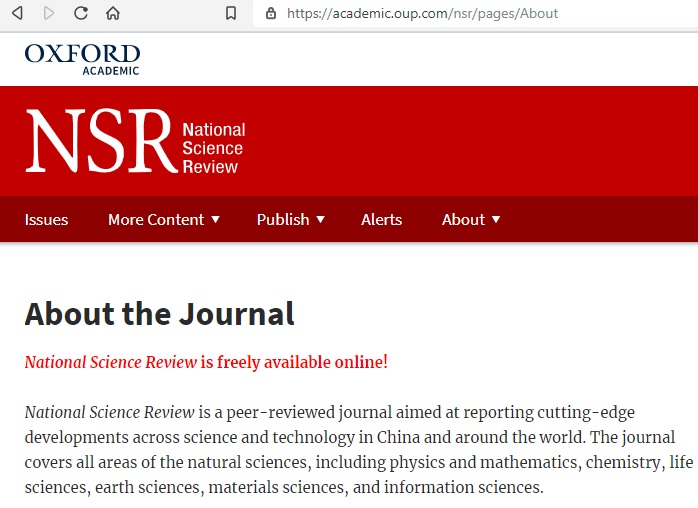
[1] Frank Schlutz and Frank Lehmkuhl, Holocene climatic change and the nomadic Anthropocene in Eastern Tibet: palynological and geomorphological results from the Nianbaoyeze Mountains, Quaternary Science Reviews, 28 (2009) 1449–1471
[2] Gao et al. Burden of disease resulting from chronic mountain sickness among young Chinese male immigrants in Tibet BMC BioMed Central Public Health 2012, 12:401, freely downloadable from http://www.biomedcentral.com/1471-2458/12/401
[3] Fan-Yi Kong, Qiang Li, and Shi-Xiang Liu, Poor Sleep Quality Predicts Decreased Cognitive Function Independently of Chronic Mountain Sickness Score in Young Soldiers with Polycythemia Stationed in Tibet, HIGH ALTITUDE MEDICINE & BIOLOGY, Volume 12, Number 3, 2011
[4] Luo Yongjun, Gao Wenxiang et al, Altered expression of mitochondrial related genes in the native Tibetan placents by mitochondrial cDNA array analysis, Journal of Medical Colleges of PLA 24 (2009) 10–17
[5] 1. Moore, LG, Niermeyer, S, Zamudio, S. Human adaptation to high altitude: Regional and life-cycle perspectives. Yearb Phys Anthropol. 1998; 41: 25-64.
2. Holden, JE, Stone, CK, Clark, CM, et al. Enhanced Cardiac Metabolism of Plasma-Glucose in High-Altitude Natives – Adaptation against Chronic Hypoxia. J Appl Physiol. 1995; 79(1): 222-8.
3. Hochachka, PW, Clark, CM, Holden, JE, et al. P-31 magnetic resonance spectroscopy of the Sherpa heart: A phosphocreatine adenosine triphosphate signature of metabolic defense against hypobaric hypoxia. Proceedings of the National Academy of Sciences of the United States of America. 1996; 93(3): 1215-20.
4. Garrido, E, Segura, R, Capdevila, A, et al. Are Himalayan Sherpas better protected against brain damage associated with extreme altitude climbs? Clin Sci. 1996; 90(1): 81-5.
5. Jansen, GFA, Krins, A, Basnyat, B, et al. Cerebral autoregulation in subjects adapted and not adapted to high altitude. Stroke. 2000; 31(10): 2314-8.
6. Huang, SY, Sun, SF, Droma, T, et al. Internal Carotid Arterial Flow Velocity during Exercise in Tibetan and Han Residents of Lhasa (3,658-M). J Appl Physiol. 1992; 73(6): 2638-42.
7. Zamudio, S, Droma, T, Norkyel, KY, et al. Protection from Intrauterine Growth-Retardation in Tibetans at High-Altitude. Am J Phys Anthropol. 1993; 91(2): 215-24.
8. Kayser, B, Hoppeler, H, Claassen, H, et al. Muscle Structure and Performance Capacity of Himalayan Sherpas. J Appl Physiol. 1991; 70(5): 1938-42.
9. Marconi, C, Marzorati, M, Cerretelli, P. Work capacity of permanent residents of high altitude. High Alt Med Biol. 2006; 7(2): 105-15.
10. Hochachka, PW, Stanley, C, Mckenzie, DC, et al. Enzyme Mechanisms for Pyruvate-to-Lactate Flux Attenuation – a Study of Sherpas, Quechuas, and Hummingbirds. Int J Sports Med. 1992; 13: S119-S22.
11. Gelfi, C, De Palma, S, Ripamonti, M, et al. New aspects of altitude adaptation in Tibetans: a proteomic approach. Faseb J. 2004; 18(1): 612-+.
12. West, JB. Lactate during Exercise at Extreme Altitude. Federation Proceedings. 1986; 45(13): 2953-7.
13. Weitz, CA, Garruto, RM, Chin, CT, et al. Growth of Qinghai Tibetans living at three different high altitudes. Am J Phys Anthropol. 2000; 111(1): 69-88.
14. Gill, MB, Pugh, LGC. Basal Metabolism + Respiration in Men Living at 5,800 M (19,000 Ft). J Appl Physiol. 1964; 19(5): 949-&.
15. Ward, M. High Altitude Deterioration. Proc R Soc Ser B-Bio. 1954; 143(910): 40-2.
16. Schneider, A, Greene, RE, Keyl, C, et al. Peripheral arterial vascular function at altitude: sea-level natives versus Himalayan high-altitude natives. J Hypertens. 2001; 19(2): 213-22.
17. Erzurum, SC, Ghosh, S, Janocha, AJ, et al. Higher blood flow and circulating NO products offset high-altitude hypoxia among Tibetans. Proceedings of the National Academy of Sciences of the United States of America. 2007; 104(45): 17593-8.
18. Patitucci, M, Lugrin, D, Pages, G. Angiogenic/lymphangiogenic factors and adaptation to extreme altitudes during an expedition to Mount Everest. Acta Physiol. 2009; 196(2): 259-65.
19. Beall, CM, Laskowski, D, Strohl, KP, et al. Pulmonary nitric oxide in mountain dwellers. Nature. 2001; 414(6862): 411-2.
20 Beall, CM, Cavalleri, GL, Deng, L, et al. Natural selection on EPAS1 (HIF2alpha) associated with low hemoglobin concentration in Tibetan highlanders. Proc Natl Acad Sci U S A. 2010; 107(25): 11459-64.
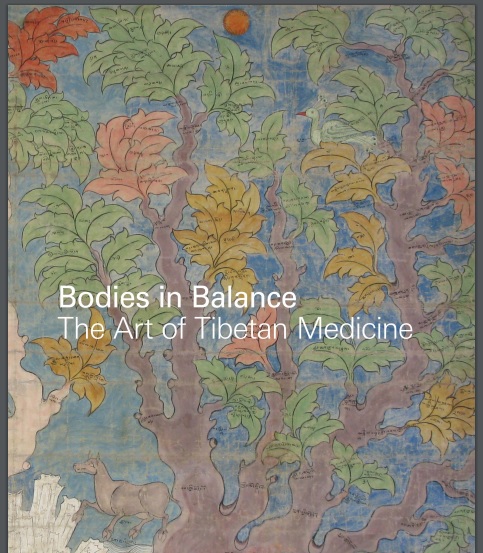
21. Jeong, C, Witonsky, DB, Basnyat, B, et al. Detecting past and ongoing natural selection among ethnically Tibetan women at high altitude in Nepal. Plos Genet. 2018; 14(9): e1007650.
22. Peng, Y, Cui, CY, He, YX, et al. Down-Regulation of EPAS1 Transcription and Genetic Adaptation of Tibetans to High-Altitude Hypoxia. Molecular Biology and Evolution. 2017; 34(4): 818-30.
23. Chen, QH, Ge, RL, Wang, XZ, et al. Exercise performance of Tibetan and Han adolescents at altitudes of 3,417 and 4,300 m. J Appl Physiol. 1997; 83(2): 661-7.
24. Havryk, AP, Gilbert, M, Burgess, KR. Spirometry values in Himalayan high altitude residents (Sherpas). Resp Physiol Neurobi. 2002; 132(2): 223-32.
25. Droma, T, McCullough, RG, McCullough, RE, et al. Increased vital and total lung capacities in Tibetan compared to Han residents of Lhasa (3,658 m). Am J Phys Anthropol. 1991; 86(3): 341-51.
26. Brutsaert, TD. Do high-altitude natives have enhanced exercise performance at altitude? Appl Physiol Nutr Me. 2008; 33(3): 582-92.
27. Halperin, BD, Sun, SF, Zhuang, JG, et al. ECG observations in Tibetan and han residents of Lhasa. J Electrocardiol. 1998; 31(3): 237-43.
28. Gilbert-Kawai, ET, Milledge, JS, Grocott, MPW, et al. King of the mountains: Tibetan and Sherpa physiological adaptations for life at high altitude. Physiology. 2014; 29(6): 388-402.
29. Wu, TY, Wang, XQ, Wei, CY, et al. Hemoglobin levels in Qinghai-Tibet: different effects of gender for Tibetans vs. Han. J Appl Physiol. 2005; 98(2): 598-604.
30. Pugh, LGCE. Excerpts from: Physiological and medical aspects of the Himalayan Scientific and Mountaineering Expedition, 1960-61. Wild Environ Med. 2002; 13(1): 57-.